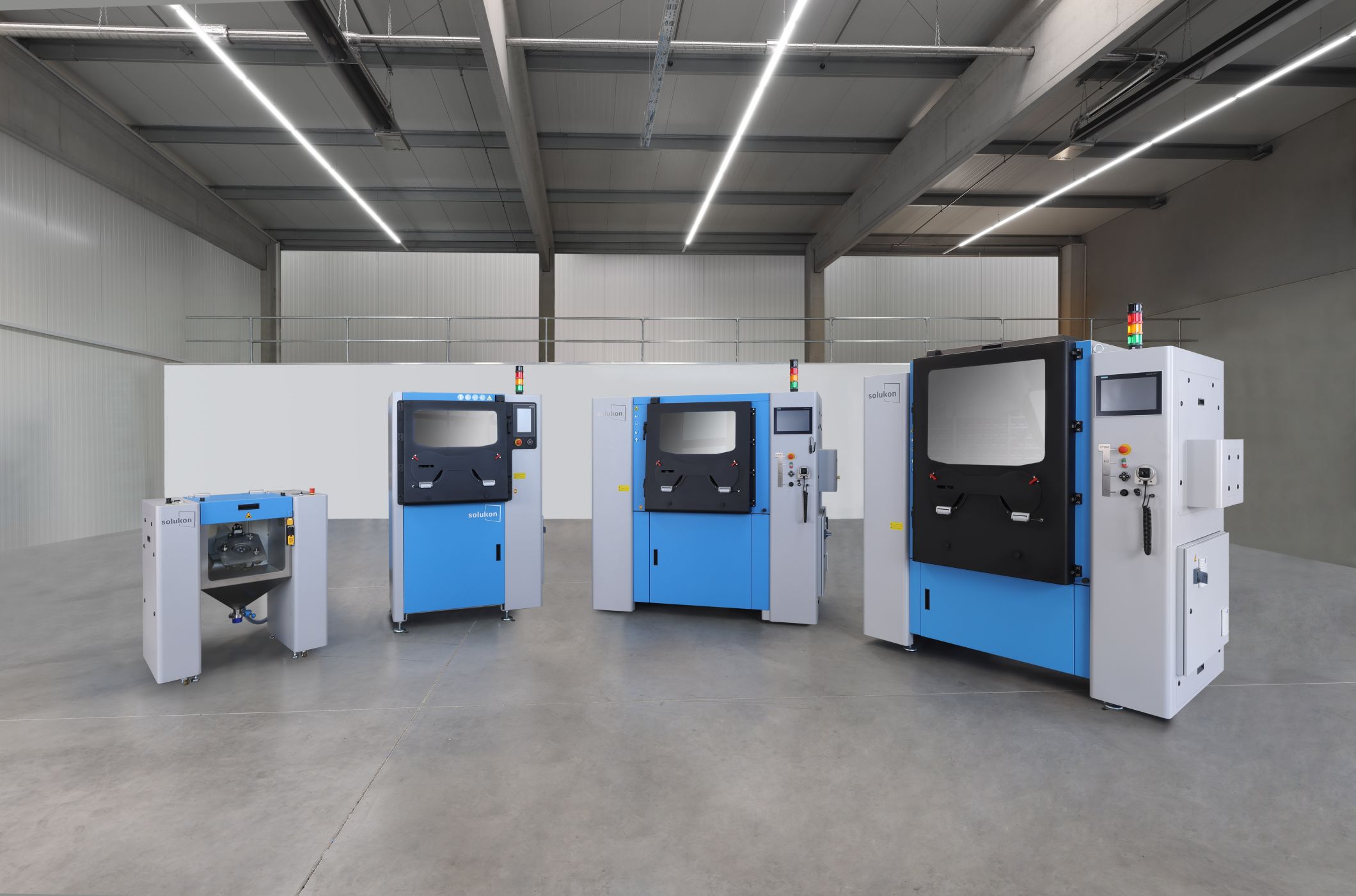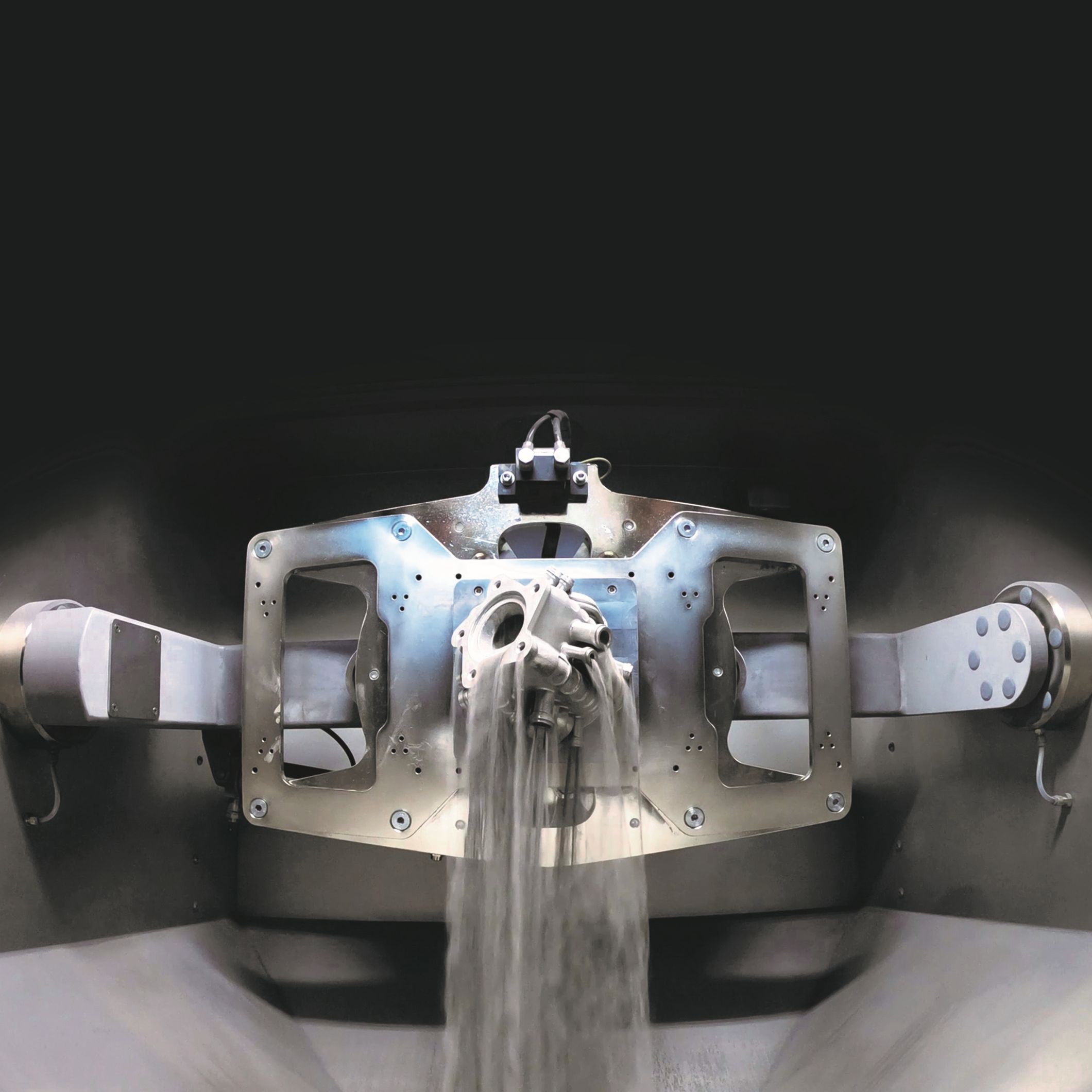26.04.2023
With the machines for depowdering metal components, URMA is expanding its machine portfolio in industrial additive manufacturing.
With the Solukon portfolio, URMA offers a variety of systems to automatically remove powder from 3D printed metal components. All machines use the Solukon Smart Powder Recuperation technology SPR®: The rotation around up to two axes and the targeted oscillation excitation make it possible to get the powder out of even the finest internal channels. Solukon depowdering systems are compatible with all powder-based 3D printers.

